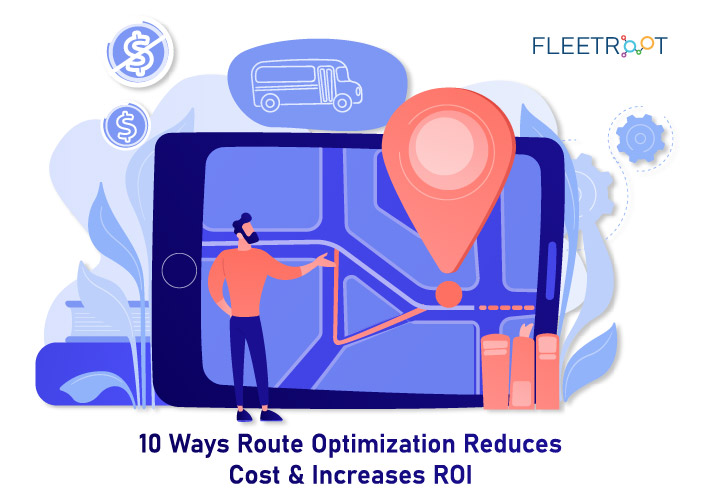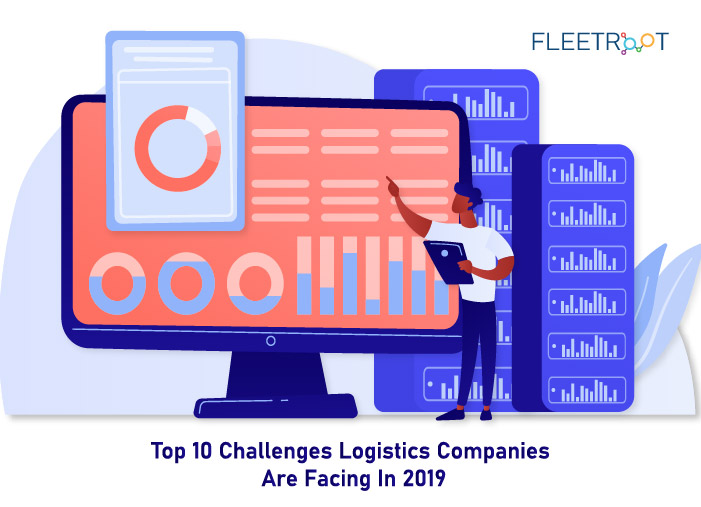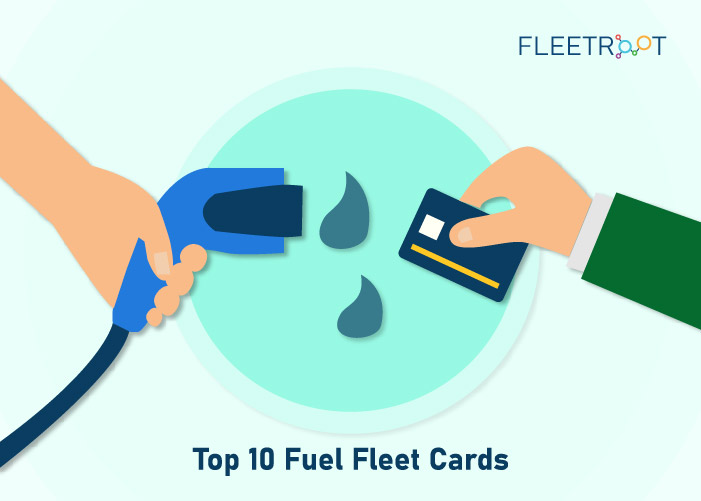If you are a business that manages fleets of any kind, it is very likely that the rising cost of transportation is significantly impacting your bottom line.
In a scenario where company budgets are getting tighter every year, success is not just about increasing the number of deliveries /orders fulfilled, but doing so in the shortest possible time and at the lowest possible cost.
Thanks to advances in technology, a fleet management system with route optimization feature can help you achieve that, and much more. Read on to see how:
1.Reduce Wastage / Downtime
Fleet management companies have to deal with a complex set of variables while planning their deliveries / transport operations. For instance, a logistics or delivery company must consider inventories, work orders, vehicle size and capacities, fuel management, dispatch and loading times, driver work hours, and customer delivery time windows.
Scheduling operations manually while taking all these factors into account takes up precious time that could have been spent on the road – leading to increased down time of vehicles and wastage of driver work hours.
But with a route optimization software, all you need to do is input all the variables into the system, and it instantly allocates vehicles, route plans and deliveries in the most optimal way possible, thus reducing delays and wastage of precious resources.
2.Prevent Incorrect Deliveries
On the one hand, clients/ customers demand increased frequency of deliveries within smaller time windows and accurate ETA’s. On the other hand, unpredictable fuel prices, driver shortages and demands to increase driver compensation are a constant threat to the bottom line.
In such pressing circumstances, a manual or inefficient route planning application can easily lead to errors, delays or incorrect deliveries, that could prove to be very expensive for the company in the long run.
But with a route optimization software, all such constraints of the business are accounted for. Loads are built and distributed as per a precise route plan, so the probability of a miscalculation or mistake is almost nil.
3.Decrease Distance and Time of Travel
The route optimization software allocates each load / order to a specific vehicle and works out an optimal delivery sequence that results in the shortest possible route for every vehicle. This means less miles driven on the road, and less time taken, which naturally brings down the cost of transportation.
Advanced route optimization systems also account for traffic considerations. Traffic is predicted by time of day, day of the week, location within a city and route direction. Thus, delays on account of traffic congestions are also reduced to a large extent.
4.Cut Fuel Costs
Fuel costs are the single largest contributor to transportation costs. But when vehicles drive on the most optimal routes every day of the week, with lesser number of stops on the road, it results in less miles travelled, less idling – and simply speaking, less fuel consumed for each vehicle. On a monthly or even a weekly basis, this can add up to considerable savings.
Additionally, since route optimization does not leave traffic to chance but accounts for traffic congestion’s, fuel wastage on account of excessive idling is also reduced.
5.Increase Productivity
Since the system allocates deliveries to the most suitable vehicles and drivers with the right skills and requisite work hours available, this results in absolutely the best possible utilization of the fleet and human resources.
Companies can now maximize the number of deliveries in every shift, and also increase the number of shifts due to the time saved. Thus, the productivity of both drivers and vehicles is increased.
6.Shrink Third Party Expenses
Fleet managers get a lot more flexibility to run their vehicles. They can run extra shifts or even schedule return visits / pick up empty containers in the same shift, thus doing away with the need to employ third party vehicles or drivers to do the extra work.
7.Reduce Number of Vehicles
Implementing a route optimization solution results in a minimum number of vehicles delivering more orders while covering maximum catchment area. Over a period of time, companies realize they can do more with less.
Hence, they may end up not purchasing new vehicles that they may have originally planned as part of scaling up operations; or even removing excess vehicles from their fleet.
8.Lower Maintenance Costs
Vehicles running on the shortest possible routes means less time on the roads. Also, when vehicles are allocated optimized route plans, they are driven optimally, with fewer starts and stops and minimal idling due to traffic congestion. All of this means lesser wear and tear of the vehicles. This eventually results in lower repair and maintenance expenses for the fleet.
9.Increase Customer Retention
With Route optimization, companies can ensure on time deliveries, accurate ETA’s and more frequent communication with customers. All of this results in a better customer experience overall.
In the long run, this means happier customers, and increased customer retention rates, which invariably has a positive impact on the bottom line.
10.Drive Continuous Improvements
Advanced fleet management and route optimization applications come with embedded analytics tools that can not only analyze real time fleet operation data but also carry out ‘what if’ analysis – analyzing the impact of changing vehicle capacity, increasing customer locations, changing days of delivery etc. Thus, companies can always analyze the financial impact of any new decision as they grow their business.
Moreover, information collected from vehicle telematics systems, drivers, customers and planners can be fed back into the system to improve the system further and drive additional growth.
Conclusion
Thus, choosing the right route optimization software can potentially have a profound impact on fleet operations, costs as well as business and profits. Companies that employ advanced fleet management software with superior route optimization capabilities can be assured of tangible cost savings right from the first week of implementation.
Over a period of 3 to 6 months, they can easily look forward to savings in the range of 10 – 30% of total transportation costs.
To those fleet management companies that are still on the edge, and wondering if the route optimization software will pay for itself – what are you waiting for? Call us for a free demo today!




